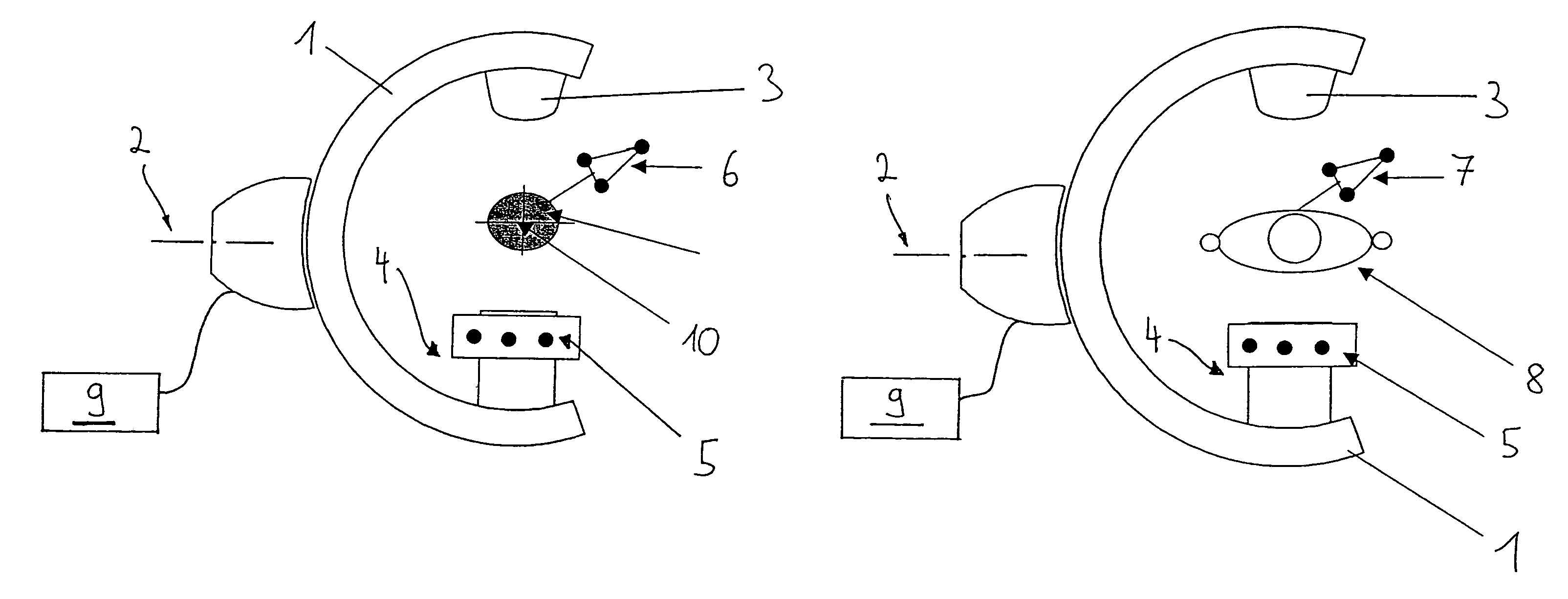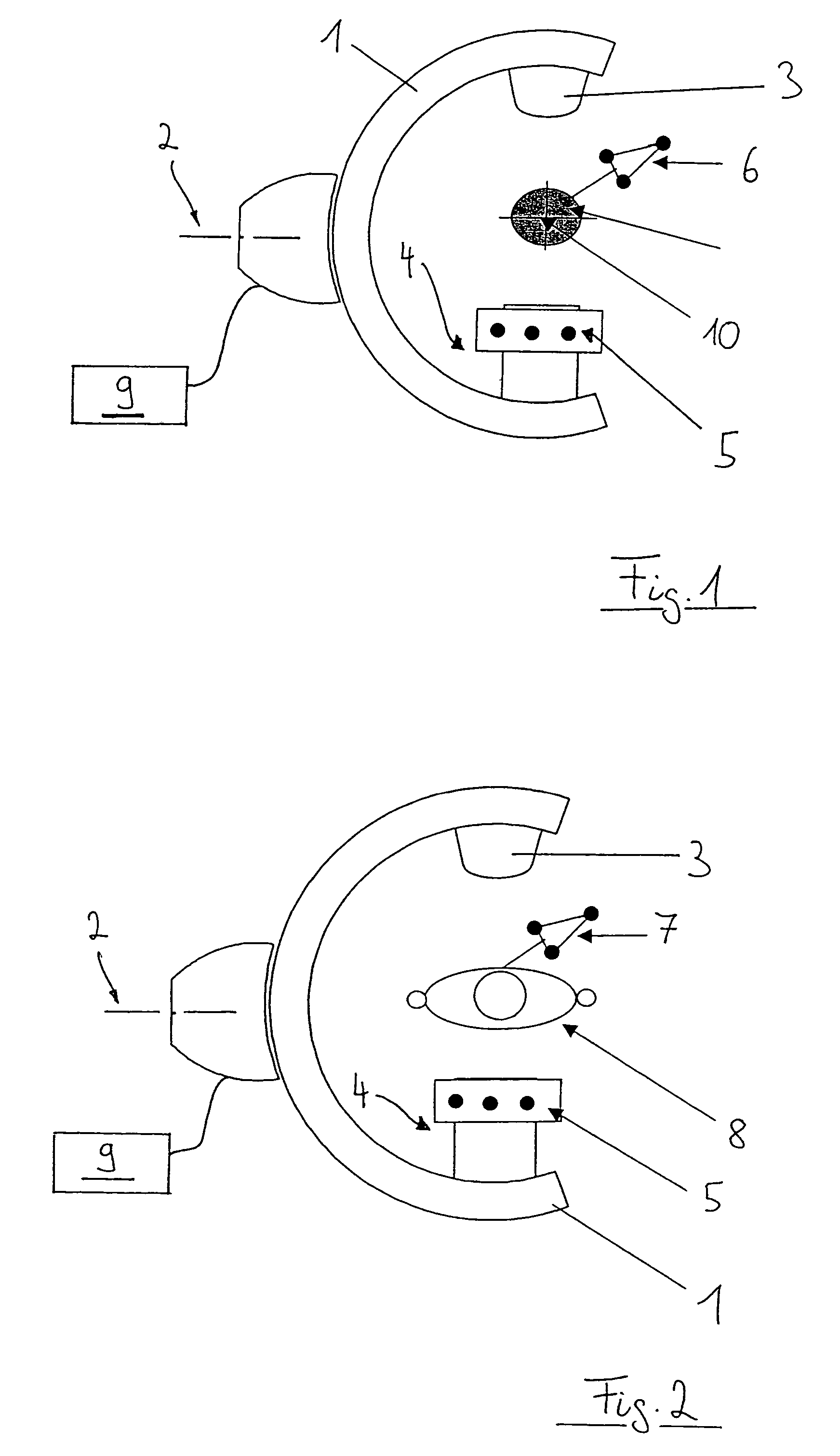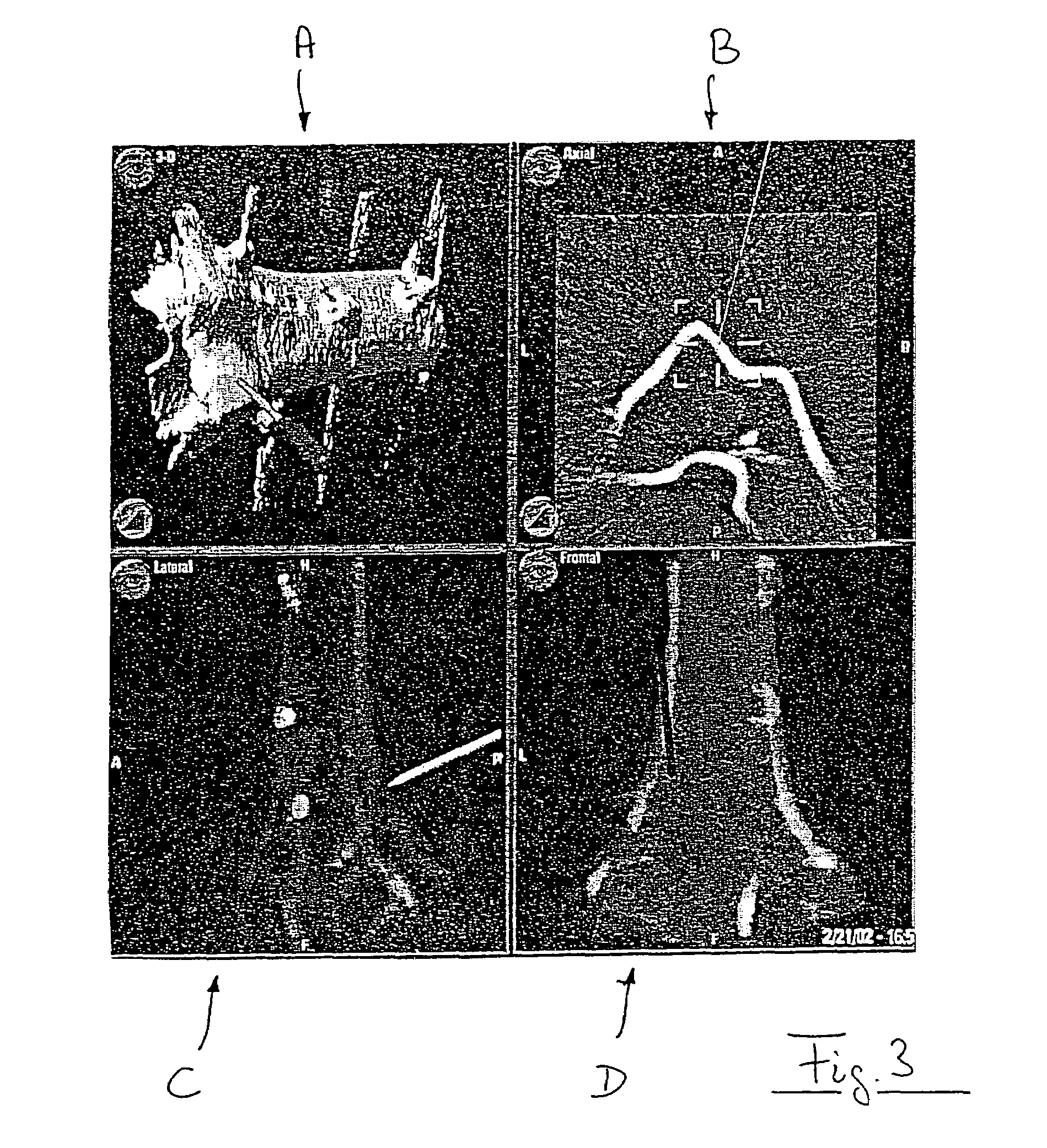X-ray image-assisted navigation using original, two-dimensional x-ray images
- Summary
- Abstract
- Description
- Claims
- Application Information
AI Technical Summary
Benefits of technology
Problems solved by technology
Method used
Image
Examples
Embodiment Construction
[0020]With reference to FIG. 1, a C-arm x-ray device 1 includes an arm, which can rotate about an axis 2 for recording x-ray images, such that, for example, a series of isocentric x-ray image recordings can be produced. The C-arm x-ray device 1 includes a radiation source 3 on an upper side and an image recorder 4 on an opposite side. In one embodiment, the image recorder 4 supports a calibration attachment, which can include a first marker geometry 5. A navigation system 9, which is shown schematically, can positionally detect and track positions of the C-arm (for example, via the marker geometry 5), and positions of objects present in the x-ray device radiation field. For example, the navigation system 9 can detect and track positions of a calibration phantom 10 (via its associated marker geometry 6), as shown in FIG. 1, or a patient 8 (via its associated marker geometry 7), as shown in FIG. 2. This position detection can be accomplished, for example, using cameras. Alternatively,...
PUM
 Login to View More
Login to View More Abstract
Description
Claims
Application Information
 Login to View More
Login to View More - R&D
- Intellectual Property
- Life Sciences
- Materials
- Tech Scout
- Unparalleled Data Quality
- Higher Quality Content
- 60% Fewer Hallucinations
Browse by: Latest US Patents, China's latest patents, Technical Efficacy Thesaurus, Application Domain, Technology Topic, Popular Technical Reports.
© 2025 PatSnap. All rights reserved.Legal|Privacy policy|Modern Slavery Act Transparency Statement|Sitemap|About US| Contact US: help@patsnap.com



